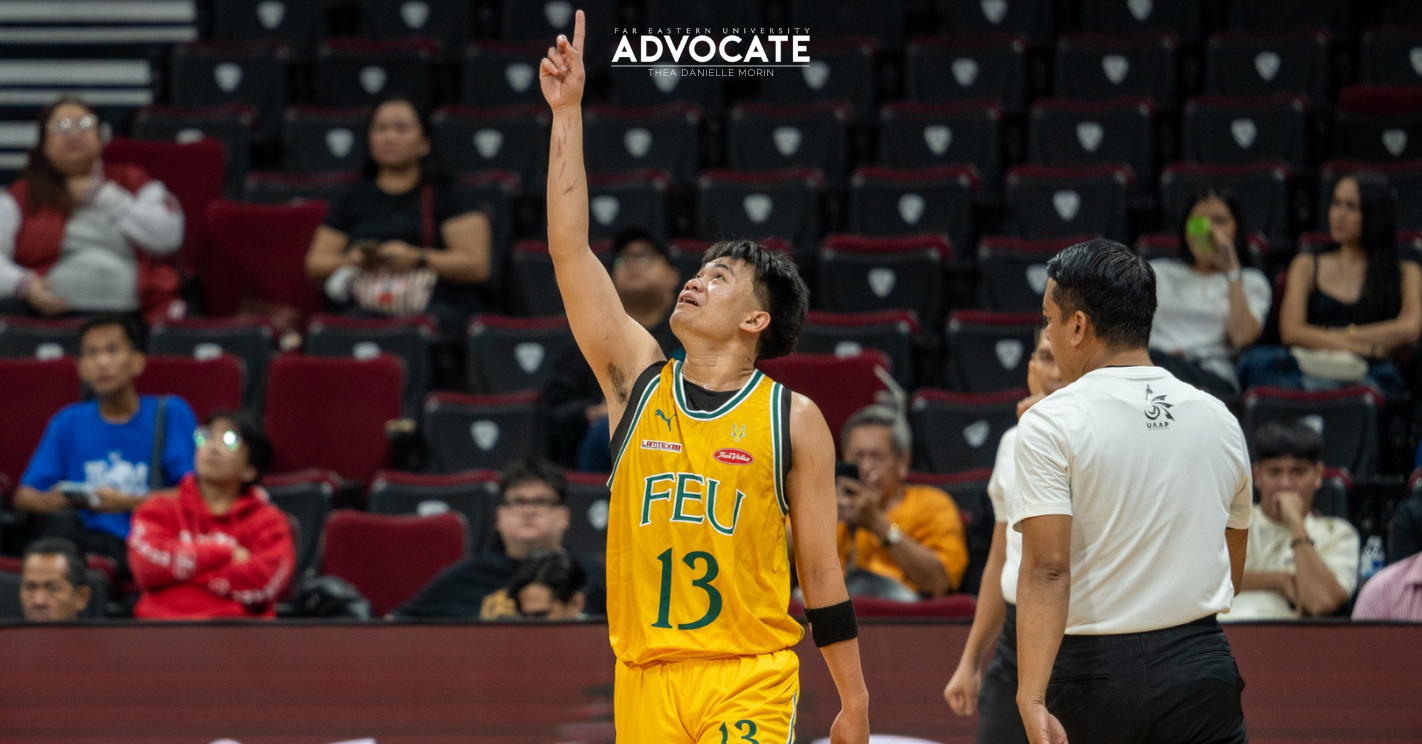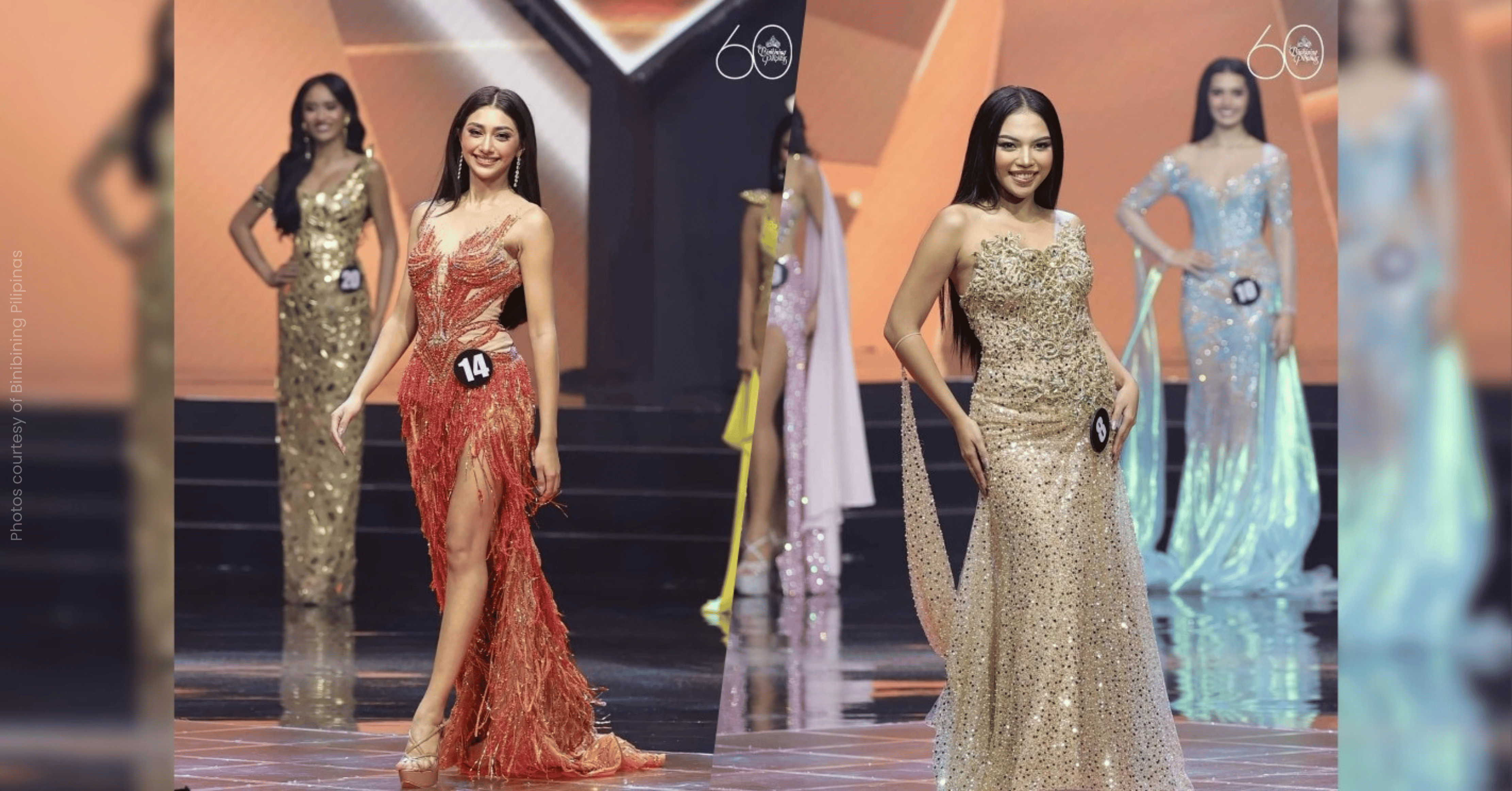
5 Restaurants in Binondo to Welcome the Year of the Rat
- January 26, 2020 10:05
FEU Advocate
October 23, 2021 03:49

October marks the season for artists to ramp up their creativity and ready their materials in full gear as art challenges fill the community. Every artist showcases their respective art styles and passion, accepting the challenges with full vigor. These art challenges push artists to go out of their comfort zone and explore new mediums or subjects, learning more skills to tuck under their creative tool belts and discover other interests they otherwise would not have looked into.
Beyond the familiar paint on canvas, some Filipino artists went out of their way to look outside the box of their art supplies in creating their masterpieces. Armed with unexpected materials, they create some of the best and ingenious artworks we have ever seen.
Here are six unusual art mediums used by Filipino artists who explored beyond the bounds of traditional art and ventured into a whole new ballpark of art mediums.
1. Human Hair and Blood
The faces and bodies of humans are typical canvases of artists, using all kinds of paint, and with much freedom and imagination, Filipino artists have also used human parts as the medium for their artworks.
Different crafts, such as jewelry made by middle-class white women of the Victorian era, were the beginning of human hair as a material during the 19th century. Most artists worldwide create art from human hair for a change in expressionism. Coming from a family of artists, Adelaida “Adela” Paterno was known for her complex embroidered art - threading human hair into silk, satin, or jusi, a Philippine-made fabric made from silk and vegetable fibers. Among her “hair paintings” are “Country Scene” (1897), “Rural Scene with Child” (circa the 1890s), and “Vista de Mariquina” (1897).
Elito Circa, a folk artist from Nueva Ecija known as “Amangpintor”, also paints with human hair - strands of his hair to appear more realistic. He is also recognized for using his blood on most of his artworks, which started only to sign them for authentication. Life, love, and sacrifice are the common themes he believes his paintings exhibit.
His famous work that incorporated hair and blood is “Lukso ng Dugo” (1992) that represents missing a loved one that left through a “less is more” approach. Another masterpiece of Circa is “Montage of Legend of Minggan” which belongs to his collection of 15 paintings dedicated to the legend about the courtship of the giant "Minggan" to "Mariang Sinukuan".
2. Matchsticks
Commonly used for lighting up candles, Louie Talents and Julius Ceasar Apellado found another use for matchsticks other than kindling fire.
Talents is an artist from Cagayan de Oro who is now living in Paris, France. Through the years, he had made several art projects using unconventional art mediums, such as the “Palanay Art Project” (2010) where he transformed biblical passages into diary entries using blackout poetry style, and the “Bar Code Diary Art Project” (2016) where he also made a series of diaries from vertical bar and QR codes.
However, one of his most notable art projects is the “Posporo Art Project” (2014) where he chose matchsticks as the medium —something that symbolized a “burning desire” and a “light to illuminate darkness”—to create a series of art pieces denouncing social and political issues in his motherland. One of the pieces in the series, “Pagkawala ng Pag-ibig sa Bayan”, was made with 4,848 matchsticks which all have the words “Pagkawala ng pag-ibig sa bayan (The loss of love towards the motherland)” in the narrow wood shaft written by Talents.
With the same seemingly ordinary object, Apellado, a Bicolano artist, made his masterpiece featuring a Philippine flag made with 19,680 matchsticks glued to wood. The painstaking process took him a week of unending work and a lot of back pain, but what emerged was a remarkable depiction of the Philippine flag which went viral on the GUHIT Pinas Facebook group in 2018.
In 2017, before he made his Philippine flag artwork, Apellado shared in an interview with Philippine Inquirer that it was his dream to make his own art that is unique and unlike any other, which is why he thought to use matchsticks. A year later, he finally decided to give his idea a shot.
Where most people would see a mere flimsy wood for starting a fire, some artists like Talents and Apellado saw something that would ignite their art into a masterpiece. Whether a symbol for illumination or just a unique art medium, one thing is for sure: let us hope their pieces stay far, far away from open fires.
3. Invisible Paint
This medium has been thriving on contemporary art and is more known as ultraviolet (UV) light-reactive paint. There is a need to place these artworks in a dark room while UV lights are surrounding them. Applying this paint requires a lot of money and time as one has to focus on the UV light conditions and professional lighting.
Edd Aragon, popularly known as a newspaper cartoonist and founding director of the Philippine Society of Cartoonists, believes that paintings seem dull with normal light. He challenged himself with this medium and had done extensive research on pigments, polymers, optical brighteners, and binders. Other than spending six years on his studio in Sydney, he spent another four years observing it with other factors such as sunlight.
“Under a Different Light” was his first exhibit of UV light paintings at the Yuchengco Museum in Makati last April 2011. The gallery floor was full of UV rays of light bulbs to unveil human images. What makes him more commendable is that he was able to generate, along with his chemist friend, a special medium called “aragonite”, from a UV light reactive mineral. He adds this to his paint formula for a more successful and impressive execution of his UV light paintings.
4. Leaves
Nature is one of the traditional themes of artists, but it can also be one of the mediums for their works. Filipino creatives have been using leaves, both as their canvases and material for collages.
Maria Mae Dacanay, a former factory worker in Laguna, started making leaf arts for income. The leaves she prefers using are jackfruit leaves and avocado leaves, which are thick and sturdy enough for real-life images. Most of her leaf arts are images of celebrities like Robert Downey, Michael Jackson, and Kobe Bryant.
Up to this day, social media is her platform to share videos and photos of her works that will attract more potential customers. She has been grateful for her sudden popularity online and support that made people appreciate her works and order from her.
Fernando “Pando” Manipon started trying leaves as his art medium during the 2009 Ondoy typhoon. He gathered brittle leaves from his balcony in Malate so that he could dry them out for his paintings. Before starting on his leaf arts, he roams around his neighborhood for fascinating leaves and spends one to three months finishing one. In an interview with Anne Quito, a design and architecture reporter, transforming dead leaves into works of art feels like they gain a new yet hopefully a lifetime purpose.
Compared to Dacanay, he is known for leaf mosaic collages of churches such as Malate Church, Barasoain Church, and St. Peter’s Basilica on an ostrich egg for Pope Francis when he visited the country last 2015. “Mga Dahon ng Lahi - Pages of Heritage” is the special art exhibition that featured his works last 2019 by San Lorenzo Ruiz Global Ministry of New York and the Philippines. His masterpieces were also exhibited at the Senate of the Philippines, San Agustin Church Museum in Intramuros, and National Commission for Culture and the Arts.
5. Food
Some love to paint, some love to eat, and most keep the two activities separate, but some artists like Andre Manguba decided to combine the two to create their artworks. A member of the Art PH community, Manguba went viral in 2017 after sharing his “pasta portraits” on Twitter—making up the iconic faces of celebrities such as Daniel Padilla, Pia Wurtzbach, and Kathryn Bernardo were pieces of cooked pasta and tomato sauce.
According to his viral tweet, he loves food so much that he thought he should combine them with his passion. Recently, aside from his usual realistic portraits of famous icons, Manguba still makes art from food, expanding out of the initial pasta and sauce and into other delicacies such as french fries, chicken, and even tacos.
Others, like the late Vincent Navarro, used food for his art for different reasons. Famous for using coffee grounds to make portraits of the faces of Benguet coffee farmers, Navarro was an environmentalist who decided to use recycled ground coffee in his art to raise awareness during the 2012 Baguio garbage build-up.
Furthermore, seen in his paintings were the hardworking Benguet coffee farmers, who he personally worked with when he volunteered in Benguet for the Cordillera Green Network. Navarro proudly presented his works, saying that depicted in the canvas were the faces of the farmers who toiled the best-tasting and richest coffee beans.
Manguba and Navarro are proof that boundaries around art are non-existent, and that your imagination, passion, and interests are the only limits.
6. Garbage
Environmental advocates do several things to raise awareness and help curb waste production—some write articles, some voice out their opinions, and some take the advocacy to their artworks.
Last 2019, Gilbert Angeles came to the realization that the Philippines was one of the biggest plastic trash contributors in the world. Driven to amend this fact, he brainstormed about actions he could take against this and decided that giving plastic waste a new life and a new purpose through his art is the way to go.
Taking shredded recycled plastic, old paint, and leftover wood, Angeles went to work producing his abstract paintings in his studio in Bulacan. Through this campaign, he gathered enough plastic waste to produce over two dozen paintings.
Nations apart but with the same advocacy, Rowel Naanep, an overseas Filipino worker, also decided to use garbage for his artworks in his home in Malaysia. Using recycled plastic bottles and lighter cases, he made miniature cars such as the iconic Philippine jeepneys, sports cars, motorcycles, and any automobile one could imagine.
Naanep created these colorful mini cars for two things: to show people that recycling does not need to be tedious work, but that it can also be fun and beautiful, and also to raise awareness about the planet’s growing problem.
Between Angeles and Naanep, they have awakened a lot of minds to the world’s environmental problems through their art exhibits. Truly, art is most powerful when done with purpose and advocacy.
What people don’t see behind the sketches and colors are the struggles artists have to overcome—lack of resources, minimal support from others, and the evolution of art itself. Despite all these, Filipino artists continue their passion every day by constantly discovering and developing themselves in the process of creating artworks. No artist is ordinary, and every masterpiece has its breathtaking beauty and meaning—so they deserve to be always appreciated and celebrated for their creativity, dedication, and hard work!
- Mikaela Anne A. Laxa and Samantha Cheyenne Gail D. Pagunuran
(Illustration by Sophia Kaye M. Fernandez/ FEU Advocate)









